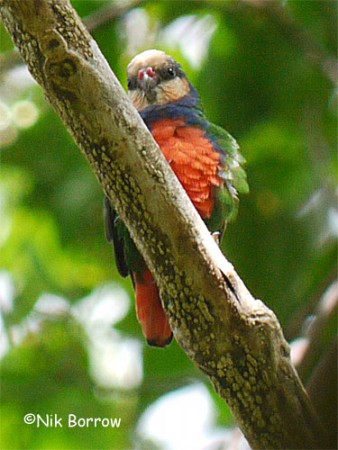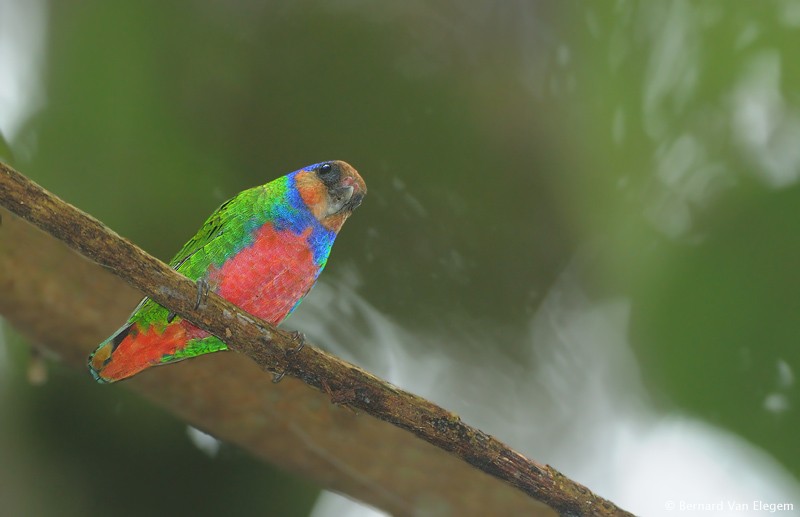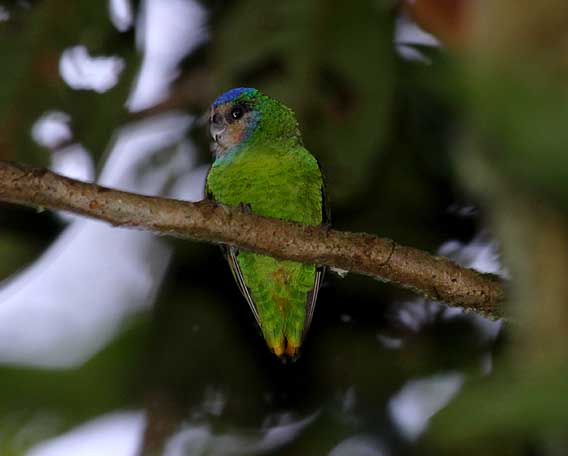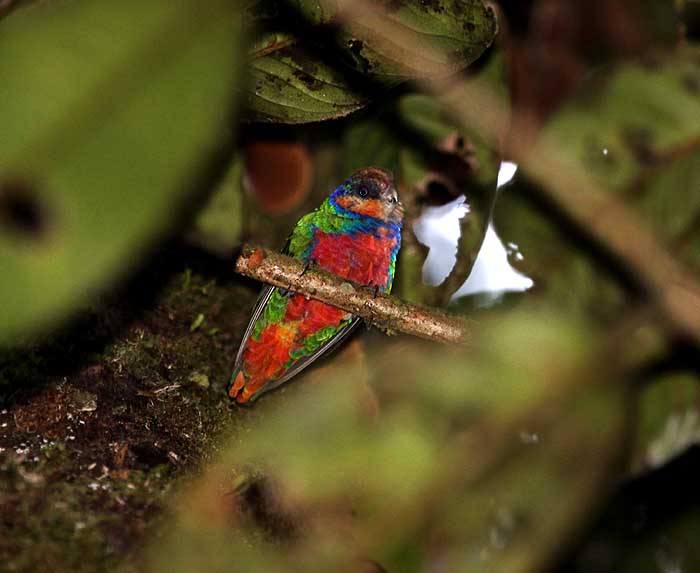
Micropsitta bruijnii
SUBFAMILY
Psittacinae
TAXONOMY
Nasiterna bruijnii Salvadori, 1875, Arfak Peninsula, New
Guinea. Four subspecies.
OTHER COMMON NAMES
English: Rose-breasted pygmy parrot, mountain pygmy parrot;
French: Micropsitte de Bruijn; German: Rotbrust-Spechtpapagai;
Spanish: Microloro Pechirrojo.
PHYSICAL CHARACTERISTICS
3.5 in (9 cm); 0.42–0.56 oz (12–16 g). One of the smallest
parrots. Mostly green plumage with orange-red breasts; bluepurple
neck; short tail feathers.
DISTRIBUTION
M. b. bruijni: mountains of mainland New Guinea. M. b. pilata:
Buru and Seram, south Moluccas, Indonesia. M. b. necopinata:
New Britain and New Ireland, Bismarck Archipelago, Papua
New Guinea. M. b. rosea: Bougainville, Papua New Guinea,
and Guadalcanal and Kolambangara, Solomon Islands. Undescribed
yellow-crowned form recorded from Ok Tedi Mountains,
mainland New Guinea.
HABITAT
Mountains and foothills; most upland forests, including cloud
forest and moss forest; also forest margins, riparian vegetation,
and occasionally coffee plantations.
BEHAVIOR
Possible nomad or altitudinal migrant. Easily overlooked because
of diminutive size, and often detected only by shrill
“tsee . . . tsee” calls; pairs or small parties climb about woodpecker-
like on surface of tree trunk or sloping limb with stiffened
tail propped against surface for support; individuals keep
close together; often leaps surprising distances between
branches; swift flight slightly undulating and with audible wingbeats;
may roost at night in hole excavated in decayed stump.
FEEDING ECOLOGY AND DIET
Diet poorly known; observed eating fungus, lichen, and moss
from surfaces of tree trunks and limbs; also seen feeding on
fruits and possibly flowers.
REPRODUCTIVE BIOLOGY
Monogamous. Breeding recorded from December–April, but little
studied; only Micropsitta species excavate nesting hole in decayed
tree or stump, other species excavate in arboreal termitaria.
CONSERVATION STATUS
Generally uncommon or sporadically dispersed, but locally
common. Listed on CITES Appendix II.
SIGNIFICANCE TO HUMANS
None known.
Other popular Animals
Photo Gallery of - Red-breasted pygmy parrot




 Animalia Life
Animalia Life